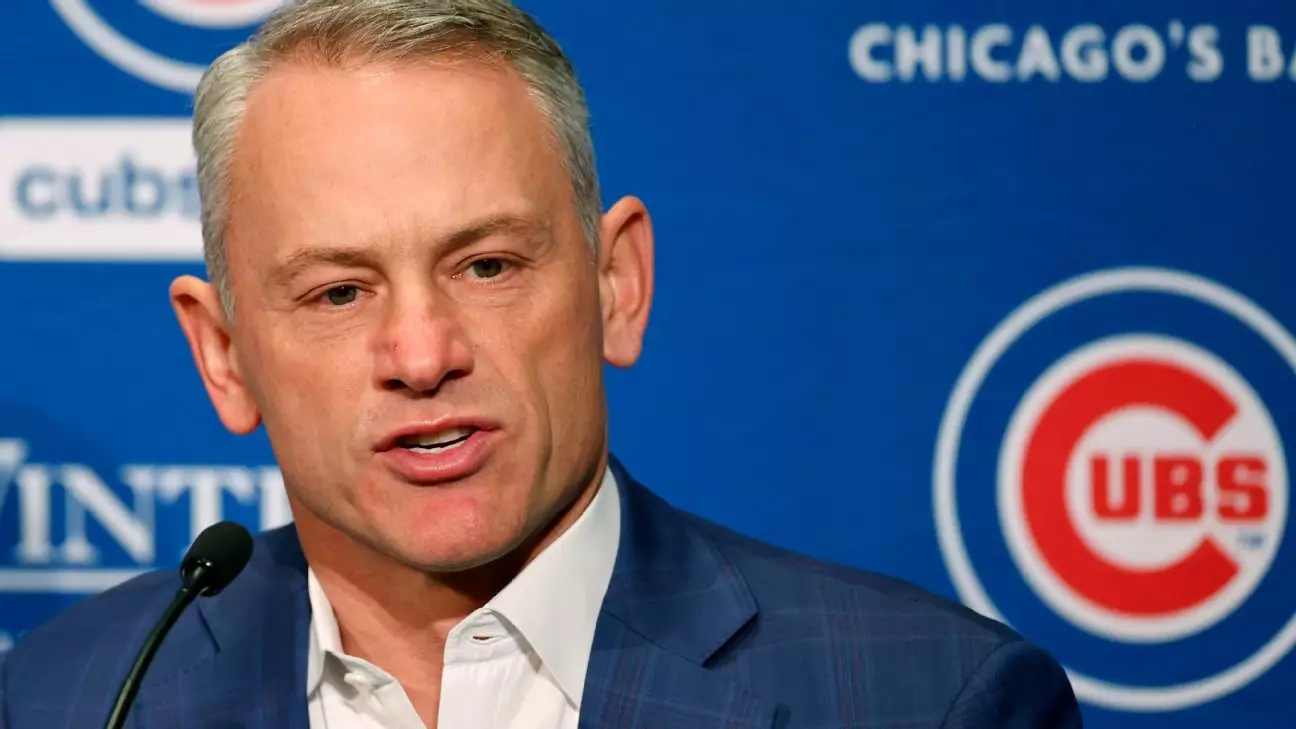As the Chicago Cubs prepare for a pivotal 2025 campaign, the atmosphere around the franchise is thick with both anticipation and trepidation. President Jed Hoyer is acutely aware that time is not on his side as he approaches the conclusion of his five-year tenure without a playoff appearance. The Cubs, once the darlings of Major League Baseball after their historic championship win in 2016, are struggling to find their footing in a competitive landscape that has only intensified. With a roster overhaul and the necessity for a strategic pivot now more essential than ever, the focus shifts to whether Hoyer can execute a vision that returns the team to postseason glory.
Rebuilding the Roster: A Gradual Process
Hoyer’s tenure has been characterized by a slow yet steady reconstruction of the team. His leadership has seen the departure of the championship core that defined the Cubs in the previous decade, leaving him with the daunting task of reestablishing a competitive roster. The strategy has been methodical—prioritizing draft picks over high-profile free-agent signings. Notably, acquisitions like Dansby Swanson and Seiya Suzuki indicate a shift towards a blend of both homegrown talent and judicious free-agent investments. Hoyer emphasized that this rebuilding phase was essential but fraught with challenges.
The director’s recent moves, such as the aggressive pursuit of Kyle Tucker, suggest a sense of urgency now permeating the organization. In trading three players for Tucker, who may only suit up for a single season, Hoyer has signaled to fans and stakeholders that the Cubs are not only rebuilding—they are keen on establishing competitiveness now, not in some distant future.
Hoyer has acknowledged that the National League has become an arena where wins are at a premium. This acknowledgment underscores the pressure surrounding not only his role but the entire Cubs organization. As they approach their opening series against the Los Angeles Dodgers in Japan, Hoyer is conscious of the weight that the upcoming season holds. The Cubs have recently delivered two back-to-back seasons, each yielding 83 wins, suggesting a plateau that must be addressed. The burning question remains whether the changes implemented will be enough to elevate the team beyond their current trajectory.
Possibilities for reinforcement linger in the background, particularly with the name Alex Bregman surfacing as a potential signing. Although unsure, Hoyer’s cautious optimism hints that adding a player like Bregman could catalyze a transformation necessary for surpassing the 90-win mark. As he notes, the modern offseason extends deeper into the calendar than it used to, making it imperative to remain attentive to late-breaking opportunities.
The 2025 season is positioned as a decisive moment for both the Cubs and Hoyer himself. A successful campaign, culminating in a playoff birth, would likely secure him an extension that many are already speculating about. Conversely, failure to perform could result in a very different outcome—not only for Hoyer but also for the coaching staff and the front office designed to support him. The stakes have never been higher, and his reflections on uncertainty tell a story of a leader grappling with pressures of accountability.
As he reflects on the challenging path so far, Hoyer gives credit to his team. He believes in the potential of his organization, asserting that the configuration of the front office, managerial talent, and the roster provide a foundation for success. However, the looming threat of failure is a reality he cannot ignore. As he puts it, “Every arrow is sort of pointing up on this organization right now,” evoking a mix of hope and caution as the season unfolds.
The season ahead will be indicative of the Cubs’ direction—a journey marked with hurdles, opportunities, and the ever-pressing desire for success. Hoyer’s ability to navigate this landscape may well define not only the season but also his legacy within a storied franchise. As fans rally for a revival and the team braces for competition, the overarching question remains: Will the Cubs rise to the occasion, or will this season serve as another chapter in a series of disappointments? The answer lies in the hands of Hoyer and his team, as the spotlight intensifies, shining brightly on Wrigley Field and echoing through the annals of baseball history.

